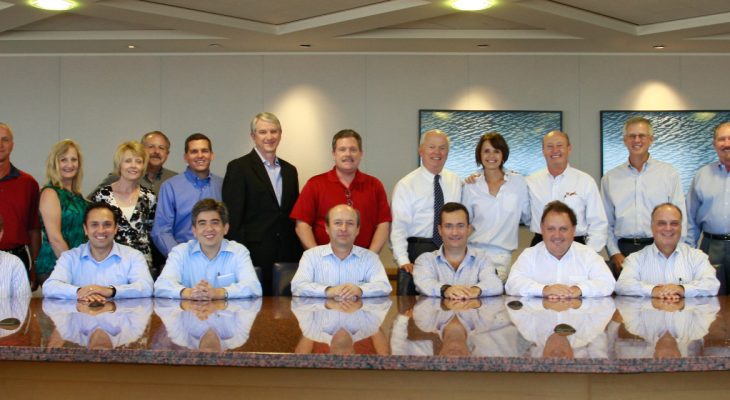Since Tim was in his 70s with no plan for family succession in the Company, the Board of Directors decided in November 2009 that it was an appropriate time to consider possible long-term strategic options for Bar-S, including the possibility of going public, a strategic merger, restructuring the balance sheet, or remaining private. The investment bank, Barclay’s Capital, was retained and the senior leadership of Bar-S worked diligently for several months preparing offering documents, legal and related materials, and making presentations to prospective strategic partners.
From the very beginning, Tim had made clear to all parties that Bar-S was just exploring strategic options and that he had not yet made a firm decision to sell the Company – that this was “His Sistine Chapel” and he would not allow a lifetime of “blood, sweat, and tears” to be destroyed by a financial transaction. It was critically important to him that the Company remain in strong hands – with people who were committed to building on our existing solid foundation and continuing to grow the business.
The field of prospective partners was narrowed by a process of non-binding offers in June 2010, and then the finalists conducted extensive due diligence. Binding legal offers were received on August 3, and the Board met that day and concluded that Sigma Alimentos (a subsidiary of Alfa, a large Mexican conglomerate) was the best prospect; however, it was generally felt that the Sigma offer was below expectations, and Tim was directed to meet with Sigma and Alfa executives and try to improve it. A more favorable offer was negotiated the next day and a binding merger agreement was signed on August 6, 2010. The plan was to merge Sigma’s U.S. operations – about a $200 million processed meat and cheese business which was not performing well – into the Company and Bar-S Foods Co. would be the surviving legal entity headquartered in Phoenix, AZ. As part of the transaction, Tim agreed to remain CEO for another two years in order to minimize the normal disruption associated with a merger, to fully integrate the two companies into a single operating business, to try to realize the sizeable potential synergies inherent from a combined enterprise, and to provide a sound transition of leadership – and from his standpoint, to protect his personal legacy and the welfare of people who had worked with him for many years.
The merger transaction with Sigma closed on September 2 – reportedly the largest transaction in Arizona in 2010. This transaction brought a very special 29-year era in Tim’s life and the ownership of Bar-S to a propitious close. The end result was a large and favorable transaction with a strong company that was an unusually good fit with Bar-S. This was truly a merger of two leaders, and there was ample indication that this would be a very strong business combination that would build upon the many years of hard work by Tim and his management team. Tim thought of it as preserving his life’s work and legacy, which was perhaps the most important aspect of this whole process for him. As Bar-S prepared to move beyond its historical roots under new ownership, the former stockholders of Bar-S provided a special recognition to all employees for long standing loyalty and dedicated efforts in the form of an Appreciation Payment totaling $3 million.
The full integration of two companies is an enormous undertaking given different accounting systems, IT platforms, compensation and benefit plans, personnel policies, distribution networks, sales and marketing approaches, operating philosophies, and management styles and cultures – to name some of the more critical issues. And the new Bar-S became a multi-brand and multi-culture enterprise with a broad product line including a large cheese segment – so it was a very complex and difficult management challenge; however, the post-merger integration process was implemented very successfully, and during the two years that Tim served as CEO the combined EBITDA of the companies increased by about 50%. Tim retired as CEO at the end of 2012 satisfied that the new combined enterprise was on a sound course for the future; however, he continued to serve as Chairman of the Board through 2017.
